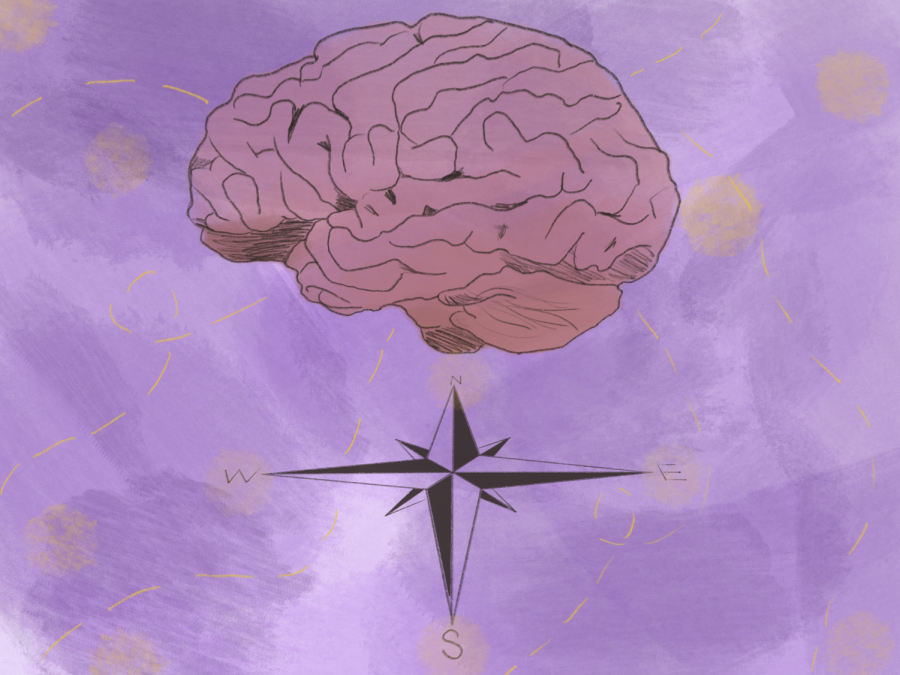Research findings on brain’s internal compass shows implications for modern human experience
April 6, 2023
A study of specialized brain cells in mice reveals new insights into the interaction between the brain’s internal compass and the visual environment, which can be connected to disorders such as Alzheimer’s disease and used to further virtual reality technologies.
The study’s co-author Xue-Xin Wei said when visual information changes, the cells reduce activity and act as a “reset button,” helping the mice reorient.
The cells can also keep track of which direction visual cues came even after the cue is removed, said Wei, an assistant professor of psychology and neuroscience.
Wei said the team also found that when briefly shown a rotating cue, the head direction cells can continue to track the rotation of the visual cues.
“The head direction cells are still yet to be discovered in humans, even though we know there are indications of some sort of a head direction system in the human brain,” said co-author Zaki Ajabi. “We cannot just stick electrodes and start to record neural activity tests to find these neurons in humans.”
Ajabi said that if discovered, the head direction system in humans may allow for the tracking of the onset of Alzheimer’s disease.
“One of the first symptoms of Alzheimer’s disease is this decrease in the ability to orient oneself,” Ajabi said. “If you have access to these neurons and see that the system is behaving less accurately than normal, then this could indicate that there’s something wrong going on and this could be the onset of Alzheimer’s disease.”
The research carries implications for improvements in virtual reality technologies, though much more research is required before it can be implemented, Ajabi said.
“When you put on these VR headsets, (it) almost completely takes over your sense of orientation and it’s very easy to mess up with your sense of direction using these tools,” Ajabi said. “We think that our findings confirm that the visual input is the most important input to the system to keep track of one’s orientation.”












